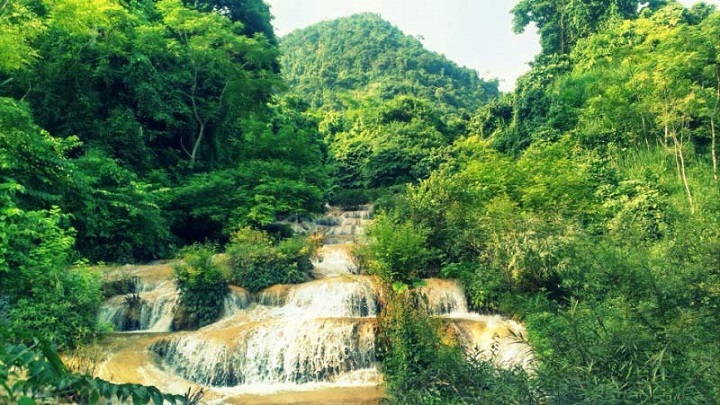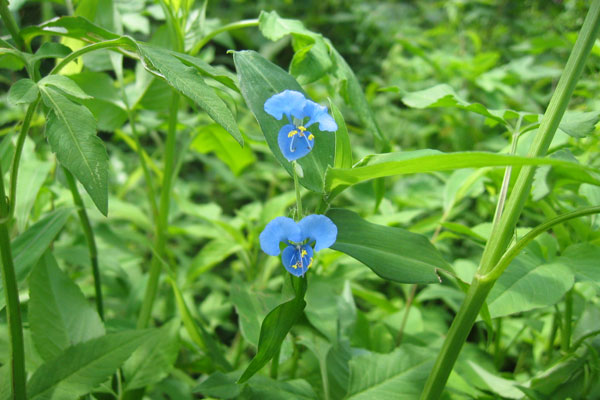So here is the list of the most famous National Parks of Indochina for you to go and enjoy with your nearest and dearest people. Indochina Book of Records (IndochinaKings) introduce Top 20 Most Famous National Parks of Indochina. Continue the previous part, Board of editors keep going to show for presenting on this website the Part 4 of Top 20 Most Famous National Parks of Indochina – Cuc Phuong National Park, Vietnam (Part 4)
Cuc Phuong National Park (Vườn Quốc-gia Cúc-phương) is in Ninh Binh Province of Vietnam. Cuc Phuong National Park is Vietnam’s largest national park and one of the most important sites for biodiversity in the country. It is homes to hundreds of species of flora and fauna. The park can be visited from Hanoi as a day trip or visitors can stay at the park’s lodging for a longer stay. Visiting the park is a terrific opportunity to get a close look at Vietnam’s nature and fees generated from tourism help protect the parks wildlife and improve the local economy. The best time of the year to visit the park is during the dry season, from November to February.

Located 120 South-West of Hanoi on 22,200 ha of rainforest, Cuc Phuong National Park is the centerpiece of Vietnam’s conservation efforts and one of the most accessible parks in the country. Vietnam’s largest and first national park, Cuc Phuong beauty and a few of its thousands of species of plants and animals can be seen with the help of a local park ranger. If you’re not interested in hiking up and down the karst mountains a good alternative is the easy but rewarding trip to the primate and turtle rehabilitation and breeding centers.

In 1960 Cuc Phuong was made into a forest reserve and in 1962 Cuc Phuong National Park was consecrated by Ho Chi Minh, who reminded the Vietnamese people that protecting the environment is protecting their future. But mankind's relationship with Cuc Phuong began long before Ho's visit. The remains of prehistoric man dating 7,000-12,000 years ago have been found in the numerous caves in the park. In 1789 the Quen Voi section of the park was the site of a major battle in the civil war between Nguyen Hue and Thanh Long. More recently, conflicts have emerged between the government and 2,500 Muong ethnic minority tribesmen who live, farm, and hunt in the park. In 1987, 500 Muong were relocated outside of the park. The government and international conservation groups have worked to alleviate poaching by employing locals in the park and selling Muong handicraft in gift shops.

Cuc Phuong is situated in the foothills of the northern Annamite Mountains. The park consists of verdant karst mountains and lush valleys. Elevation varies from 150 meters (500 feet) to 656 m (2,152 feet) at the summit of May Bac Mountain, or Silver Cloud Mountain. The limestone formations produced numerous caves, many of which are accessible for exploration.

Cúc Phương is home to an amazing diversity of flora and fauna. Inhabitants of the park include 97 species of mammals, most notable endangered langurs; 300 species of birds; 36 reptilian species; 17 species of amphibians; 11 species of fish; 2,000 species of vascular plants, and thousands of species of insects. A number of species in the park are listed on Vietnam Red Book of endangered species.
The park is most famous for its pangolins.
Primates in the park include macaques, gibbon, François's leaf monkey and slow loris. Other mammals include bats, porcupine, flying squirrel, small striped squirrel, belly-banded squirrel, and the rare black giant squirrel. In the past the park was home to Asiatic black bears, wild dogs, elephants, rhinos, and tigers, but over hunting and lack of prey have most led to the loss of these species. Leopards, clouded leopards, and jungle cats may still be present in the park.

Apes in Cuc Phuong National Park
Bird species include bar-backed partridge, scaly-breasted partridge, silver pheasant, red junglefowl, grey peacock-pheasant, laughingthrushes, red-vented barbet, green-eared barbet, scimitar-billed babblers, brown hawk-owl, scarlet minivet, racket-tailed drongos, racket-tailed treepie, white-winged blue magpie. Migrant species include thrushes, flycatchers, tits, finches, pipits amongst others. Hornbills can also be spotted in the forest.

An endemic subspecies of sub-terranic cave fish is also located in the park.
Flora in the park includes multi-layered canopy; trees up to 70m in height; flowers, including, orchids; ferns with amazingly tall leaves; and an abundance of lianaand cauliflory. The park also contains plants used for such practicalities as spices and medicines as well as edible fruits, nuts and shoots.

There are three conservation programs located in the Cúc Phương National park:
Endangered Primate Rescue Center
The primate center houses specimens of langurs, loris, and gibbon species, include the critically endangered Delacour's langur, golden-headed langur, Tonkin snub-nosed langur and black crested gibbon. The primate center was established in 1993 with the help of the Frankfurt Zoological Society and has grown to 100 animals in 30 cages, 4 houses, two semi-wild enclosures.
Carnivore and Pangolin Conservation Program
The Carnivore and Pangolin Conservation Program (CPCP) is dedicated to the conservation of small carnivores (civets, linsangs, small cats, weasels, otters and badgers) and pangolins in Vietnam. The program was established in 1995 as a species specific program for the endangered Owston's civet and has since expanded to include all species of small carnivore. In 2006 the program also began focused conservation activities for Vietnam's two species of pangolin, the Chinese pangolin and the Sunda pangolin. All of these species are threatened by the illegal wildlife trade which is having a devastating impact on the wild populations of these species throughout South East Asia.

The CPCP aims to conserve these threatened species of mammal through the rescue and rehabilitation of trade confiscated wildlife, education and awareness and field research. The CPCP also runs the region's only conservation breeding program for the Owston's civet, a species that is endemic to Indochina, and whose main range is within Vietnam.
The CPCP's main centre is within Cúc Phương National Park, but operates a nationwide rescue program and has active field sites in Central and Southern Vietnam.
Turtle Conservation Center
The turtle conservation center was established in 1998 and is home to some of the most endangered turtles in Vietnam, including the Vietnamese pond turtle which is nearly extinct in the wild.
Source: Wikipedia











